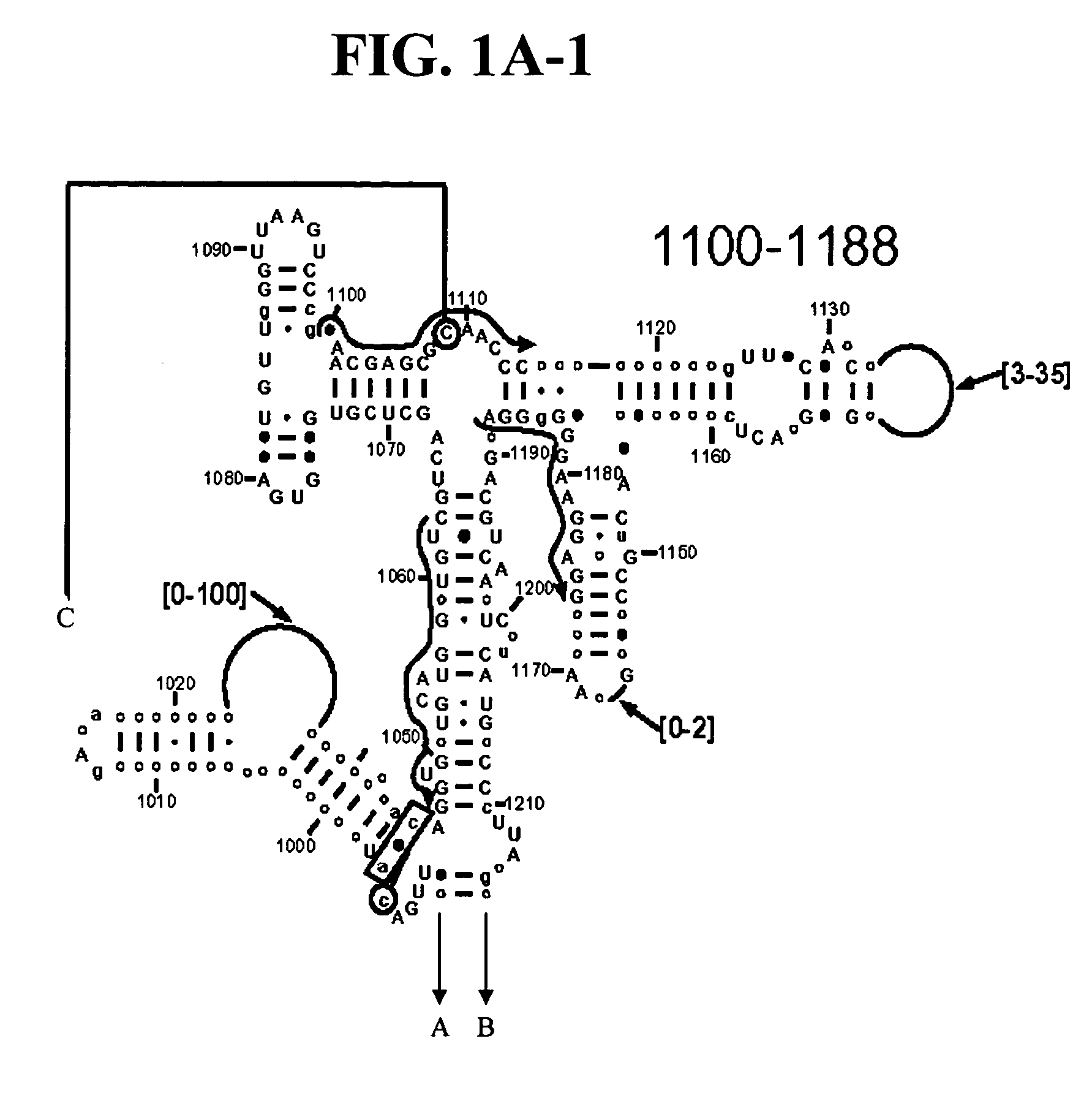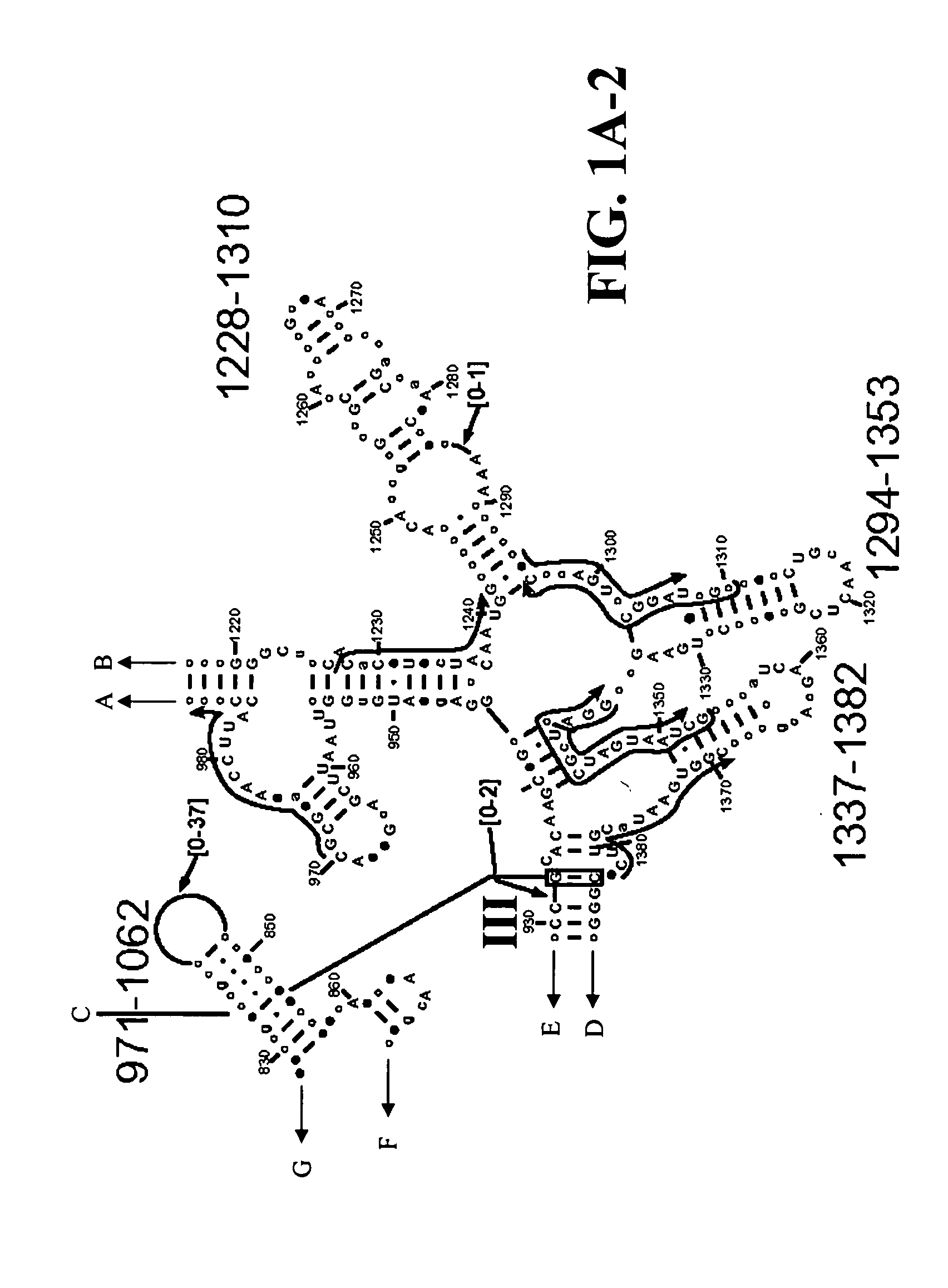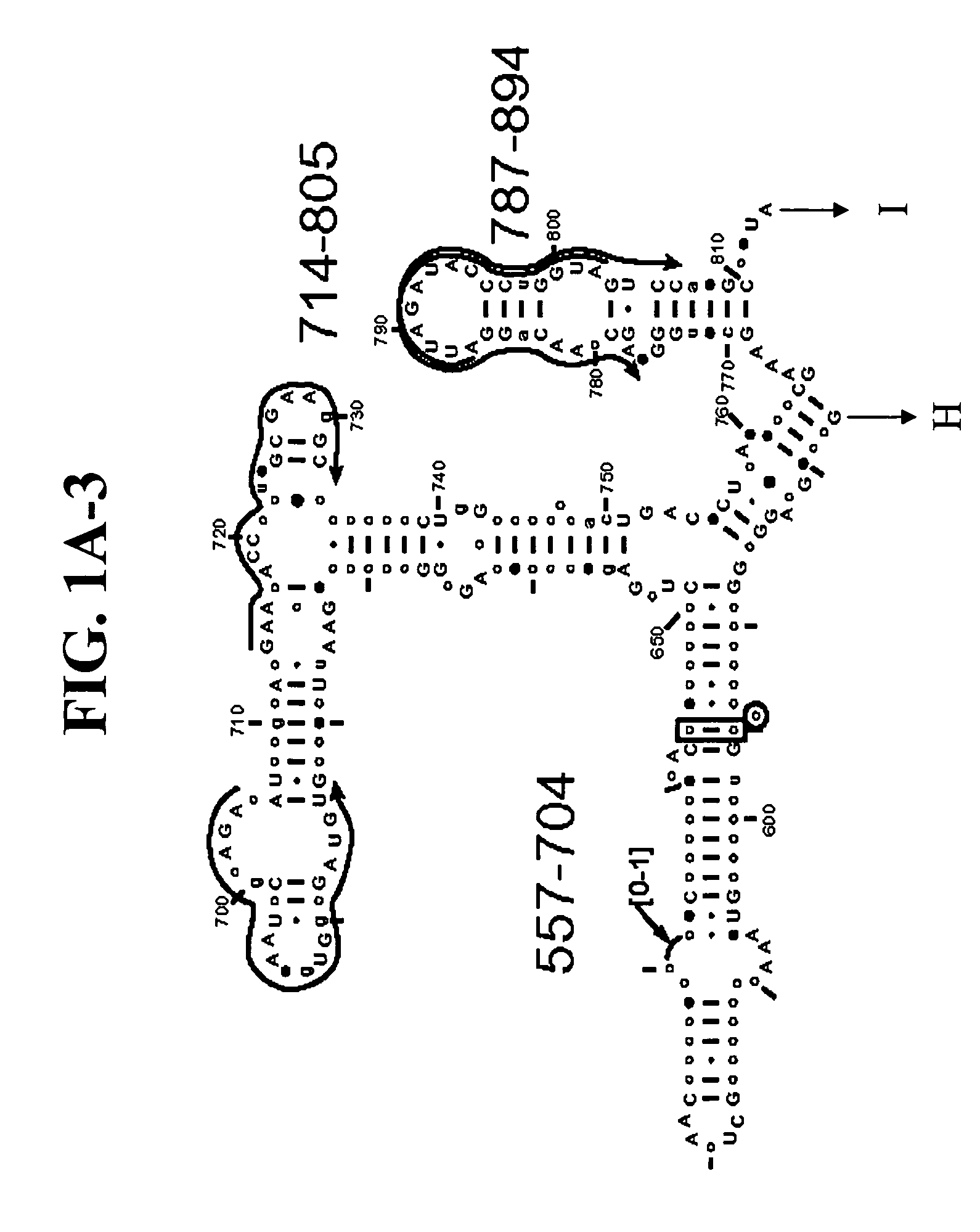Methods for identification of coronaviruses
a technology of coronaviruses and methods, applied in the field of gene identification and quantitation of coronaviruses, can solve the problems of high frequency of recombination, slow replication compared to other enveloped viruses, and no adequate animal model for human respiratory coronaviruses
- Summary
- Abstract
- Description
- Claims
- Application Information
AI Technical Summary
Benefits of technology
Problems solved by technology
Method used
Image
Examples
example 1
Coronavirus Samples, Nucleic Acid Isolation and Amplification
[0112] HRT-18 and MRC5 cell lines were inoculated with HCoV-OC43 and HcoV-229E (University of Colorado and Naval Health Research Center, San Diego, Calif.), HcoV-229E. SARS RNA was obtained the CDC (Atlanta, Ga.) as a 1 mL extract of SARS coronavirus in TRIzol extraction buffer. The SARS CoV-Tor2 strain was obtained from the University of Manitoba as a cell culture supernatant from infected Vero-E6 cells.
[0113] RNA was isolated from 250 μL of coronavirus infected cells or culture supernatant using Trizol or Trizol LS respectively (Invitrogen Inc., Carlsbad, Calif.) according to the manufacturer's protocol. 5 μg of sheared poly A DNA was added for the precipitation of the RNA. The pelleted nucleic acids were washed in 70% ethanol and resuspended in 100 μL DEPC-treated water containing 20 units of Superase•In™ (Ambion, Austin, Tex.). The resuspended RNA was purified using the Qiagen RNAeasy mini kit according to the manufa...
example 2
Molecular Mass Determination
[0117] The mass spectrometer is based on a Bruker Daltonics (Billerica, Mass.) Apex II 70e electrospray ionization Fourier transform ion cyclotron resonance mass spectrometer (ESI-FTICR-MS) that employs an actively shielded 7 Tesla superconducting magnet. All aspects of pulse sequence control and data acquisition were performed on a 1.1 GHz Pentium II data station running Bruker's Xmass software. 20 μL sample aliquots were extracted directly from 96-well microtiter plates using a CTC HTS PAL autosampler (LEAP Technologies, Carrboro, N.C.) triggered by the data station. Samples were injected directly into the ESI source at a flow rate of 75 μL / hr. Ions were formed via electrospray ionization in a modified Analytica (Branford, Conn.) source employing an off axis, grounded electrospray probe positioned ca. 1.5 cm from the metalized terminus of a glass desolvation capillary. The atmospheric pressure end of the glass capillary is biased at 6000 V relative to ...
example 3
Selection of Primers
[0118] To design primers that amplify all known coronavirus species and to identify new members, alignments were carried out using all available coronavirus sequences from GenBank, including complete genomes and individual genes, and scanned for regions where pairs of PCR primers would generate bioagent identifying amplicons of a length of about 150 or fewer nucleobases. The current length limit of about 150 nucleobases is dictated by the ability of electrospray mass spectroscopy to determine the mass of a PCR amplification product with sufficient accuracy to unambiguously determine the base composition. One with ordinary skill in the art will recognize that this limit may increase subject to improvements in the art of molecular mass determination of nucleic acids.
[0119] Two target regions were selected in coronavirus orf-1b, one in the RNA-dependent RNA polymerase (RdRp) and the other in Nsp11 (FIG. 7). Locations of primers within these regions were optimized ...
PUM
| Property | Measurement | Unit |
|---|---|---|
| Fraction | aaaaa | aaaaa |
| Fraction | aaaaa | aaaaa |
| Fraction | aaaaa | aaaaa |
Abstract
Description
Claims
Application Information
 Login to View More
Login to View More - R&D
- Intellectual Property
- Life Sciences
- Materials
- Tech Scout
- Unparalleled Data Quality
- Higher Quality Content
- 60% Fewer Hallucinations
Browse by: Latest US Patents, China's latest patents, Technical Efficacy Thesaurus, Application Domain, Technology Topic, Popular Technical Reports.
© 2025 PatSnap. All rights reserved.Legal|Privacy policy|Modern Slavery Act Transparency Statement|Sitemap|About US| Contact US: help@patsnap.com



